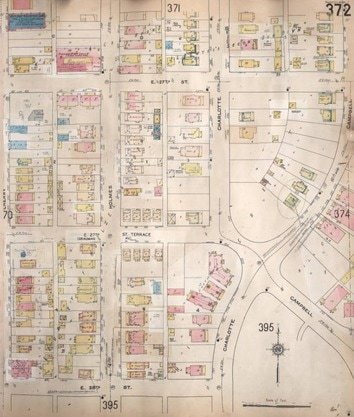A.E. Wardner, Principal of Longfellow School circa 1895. See more in the Missouri Valley Special Collection digital archive.
A.E. Wardner, Principal of Longfellow School circa 1895. See more in the Missouri Valley Special Collection digital archive.
Neighborhood Roots
Named by its German settlers just before the turn of the twentieth century, Deutsche Hill is more commonly known as Longfellow today. Forty primarily residential blocks are nestled between historic commercial corridors on Troost Avenue, Thirty-first Street, Gillham Road, Cherry Street, and McGee Trafficway.
The name Deutsche Hill was Americanized over time to Dutch Hill, and early planning documents refer to the neighborhood as both Dutch Hill and Longfellow. Longfellow Elementary School appears well-established on historic Sanborn maps as early as 1907, and may have been the inspiration behind the neighborhood nickname.
Neighborhood re-settlers in the 1970s used the name Longfellow to establish a 501(c)3 community association, which has been actively coordinating community and civic efforts to stabilize, grow, and sustain our neighborhood for almost 50 years.
Longfellow today enjoys the benefits of continued coordinated planning efforts, which have helped neighbors imagine a twenty-first century community on the southern edge of downtown Kansas City.
The last 10+ years have seen a revival of families with children moving into the neighborhood, entrepreneurial projects enlivening barren commercial nodes, the transformation of once abandoned alleys and vacant lots into community growing spaces, culminating in the 1/4-acre Longfellow Farm, and the continued restoration of turn-of-the-century homes alongside new residential development.
The future is bright in Longfellow.
The original Longfellow School is located between 28th and 29th, Holmes and Cherry Streets, named after poet Henry Wadsworth Longfellow.



